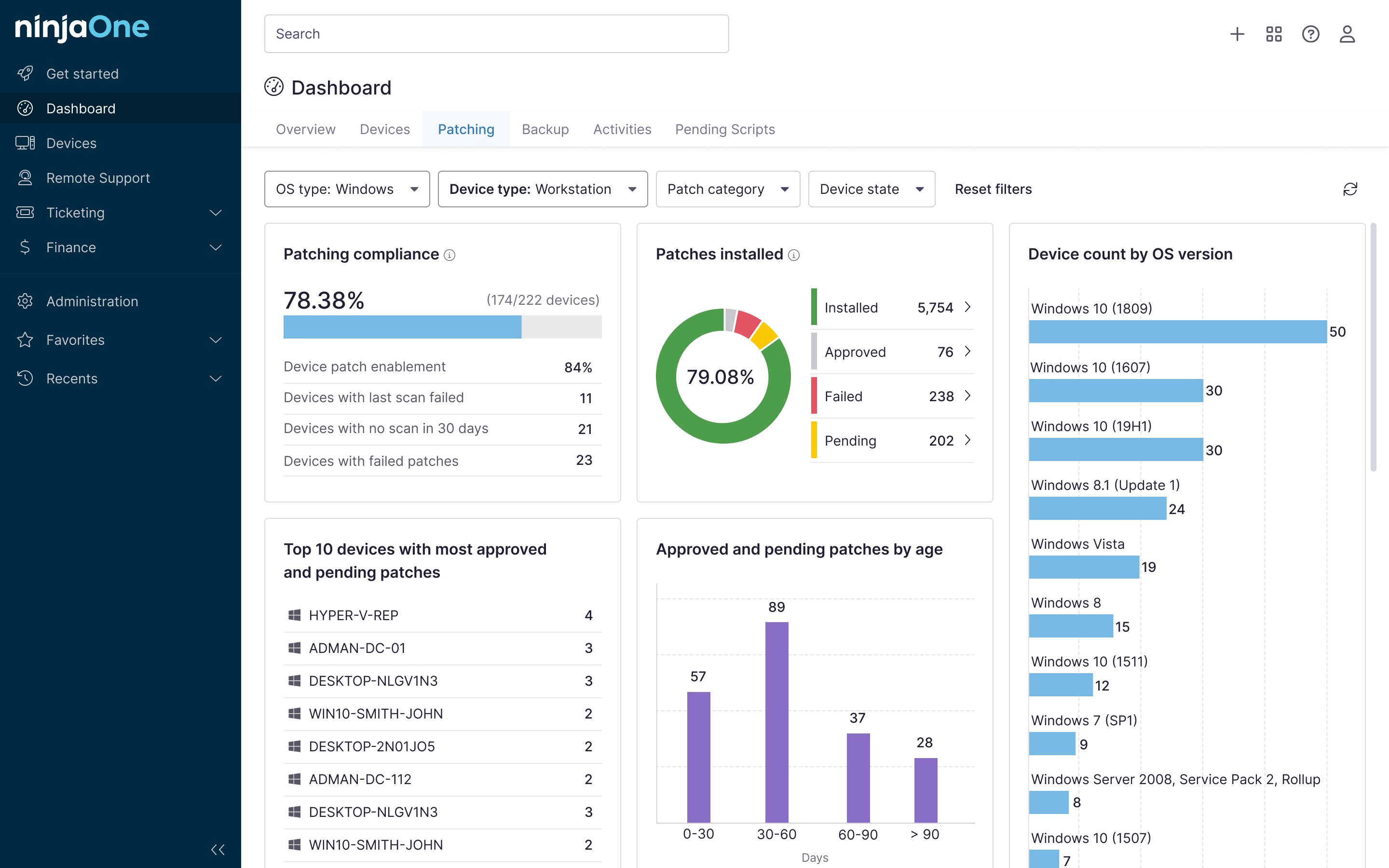Key Points
- IT operational efficiency definition: Maximizing value from technology investments by streamlining processes, minimizing waste, leveraging automation, and aligning IT with business goals.
- Operational Challenges
- System downtime
- Data security & compliance
- Balancing cost vs. efficiency
- Scaling IT infrastructure
- Managing remote workforce
- Managing technical debt
- Overall operational strategies:
- Embrace automation to reduce manual errors and free staff for strategic work.
- Adopt proactive IT management using predictive analytics and preventive maintenance.
- Foster a culture of continuous improvement by regularly optimizing processes and staying updated on best practices.
- Align IT with business goals to ensure strategic relevance and value delivery.
- Invest in employee development to modernize skills and improve problem-solving.
IT operational challenges are an inherent part of managing modern technology infrastructures. From system downtime to data security concerns, these issues can significantly impact an organization’s efficiency and effectiveness. Addressing these challenges requires a strategic approach that balances immediate needs with long-term operational goals.
📌For those who prefer a visual format, our video 6 IT Operational Challenges (and How to Fix Them) walks you through this blog.
Introduction to IT operational efficiency
IT operational efficiency refers to your ability to deliver IT services in the most cost-effective and productive manner possible. Achieving high IT operational efficiency maximizes the value of your technology investments while minimizing waste and unnecessary expenses.
To improve your IT operational efficiency, focus on streamlining processes and workflows to eliminate unnecessary steps. It will also help to utilize IT asset management tools to know where to allocate. Use automation where possible to reduce manual errors and save time. Continuously monitor and optimize system performance to maintain peak efficiency and align your IT initiatives with overall business goals.
IT operational challenge 1: Managing system downtime
System downtime remains one of the most significant IT operational challenges you’ll encounter. Unplanned outages can lead to lost productivity, revenue, and customer trust. To address this challenge effectively, consider the following strategies:
- Implement robust monitoring systems: Use tools that provide real-time insights into your infrastructure’s health. These tools should allow you to identify and address potential issues before they cause downtime.
- Develop a comprehensive disaster recovery plan: Create and regularly test backup and recovery procedures. This will ensure quick system restoration in case of failures.
- Use redundancy and failover systems: Implement redundant hardware and load balancing to maintain operations even if individual components fail.
- Conduct regular maintenance: Schedule and perform routine system checks and updates during off-peak hours. This is to minimize disruption to business operations.
Adopting these operational strategies for IT departments will allow you to significantly reduce the impact of system downtime on your organization.
IT operational challenge 2: Ensuring data security and compliance
Due to an increase in cyber threats and stringent regulations, data security and compliance have become consistent IT operational challenges. To address these concerns:
- Implement a secure cybersecurity framework: Develop and maintain a comprehensive security strategy that includes firewalls, intrusion detection systems, and scheduled security audits.
- Provide ongoing security training: Educate your staff about the latest security threats. Implement best practices to create a culture of security awareness.
- Stay updated on compliance requirements: Regularly review and update your policies and procedures. This is to ensure compliance with relevant regulations such as GDPR, HIPAA, or PCI-DSS.
- Implement data encryption and access controls: Protect sensitive information both at rest and in transit. Ensure that only authorized personnel can access critical data.
Prioritizing these aspects of IT operational efficiency helps you protect your organization’s valuable data assets and maintain regulatory compliance.
IT operational challenge 3: Balancing cost and efficiency
As an IT leader, you’re constantly challenged to do more with less. Balancing the need for cutting-edge technology with budget constraints is a common IT operational challenge. To address this:
- Conduct regular cost-benefit analyses: Evaluate your IT investments to ensure they’re delivering the expected value and adjust your strategy accordingly.
- Consider cloud solutions: Use cloud services to reduce hardware costs. And increase scalability so that you pay only for the resources you use.
- Implement IT asset management: Track and optimize the use of your IT assets to maximize the lifespan of your equipment.
- Explore open-source alternatives: Where appropriate, consider open-source solutions. These can provide similar functionality to proprietary software but at a lower cost.
Adopting these IT ops best practices will enable you to optimize your IT spending while maintaining high levels of efficiency and performance.
IT operational challenge 4: Scaling IT infrastructure
As your organization grows, so do the demands on your IT infrastructure. Scaling your systems to meet increasing needs while maintaining performance and reliability is a significant challenge. To address this:
- Adopt a modular architecture: Design your systems with scalability in mind. This should allow you to add or upgrade components as needed without disrupting the entire infrastructure.
- Leverage virtualization: Use virtualization technologies to maximize hardware utilization and easily scale resources up or down based on demand.
- Implement auto-scaling solutions: For cloud-based services, use auto-scaling features. This will help to automatically adjust resources based on traffic or workload.
- Plan for future growth: Regularly assess your current infrastructure against projected growth to ensure you’re prepared for future demands.
These operational strategies for IT departments will help you build a flexible and scalable infrastructure that can grow with your organization.
IT operational challenge 5: Managing remote workforces
The rise of remote work has introduced new IT operational challenges, particularly in terms of support, security, and collaboration. To effectively manage a remote workforce:
- Implement robust remote access solutions: Provide secure VPN access or cloud-based workspace solutions. This will help to ensure employees can work efficiently from anywhere.
- Enhance remote support capabilities: Use remote desktop tools and helpdesk systems. This should allow your IT team to troubleshoot issues without physical access to devices.
- Strengthen endpoint security: Implement mobile device management (MDM) solutions and endpoint protection to secure remote devices and data.
- Foster digital collaboration: Provide and support collaboration tools that enable effective communication and teamwork among remote employees.
Addressing these aspects of remote work management enables IT operational efficiency even with a distributed workforce. For more insights on these challenges and how IT leaders can overcome them, watch our video: Transitioning to a Remote Workforce: Top IT Challenges.
IT operational challenge 6: Managing technical debt
Technical debt poses a significant challenge to your IT operational efficiency. It accumulates when you opt for quick fixes or temporary solutions instead of more robust, long-term approaches. To effectively manage technical debt:
- Implement a technical debt tracking system: Use tools to identify, quantify, and prioritize areas of technical debt in your systems.
- Allocate time for refactoring: Schedule times for your team to improve existing code and systems without adding new features.
- Maintain comprehensive documentation: Make sure all systems and processes are well-documented to ease future maintenance and upgrades.
- Balance new development with debt repayment: When planning new projects, factor in time and resources. This is to address existing technical debt.
- Educate stakeholders: Help non-technical stakeholders understand the importance of managing technical debt to secure necessary resources and support.
Actively managing technical debt helps you improve system stability and reduce long-term maintenance costs. It also helps increase your IT department’s ability to adapt to new technologies and business needs.
Operational strategies for IT departments
To overcome these common IT operational challenges and improve your overall IT operational efficiency, consider implementing these overarching strategies:
- Embrace automation: Use IT automation tools to streamline repetitive tasks. It will also be beneficial to reduce human error, and free up your team for more strategic initiatives.
- Adopt a proactive approach: Shift from reactive problem-solving to proactive management. You can do this by implementing predictive analytics and preventive maintenance.
- Foster a culture of continuous improvement: Encourage your team to regularly assess and optimize processes. Make sure to stay updated on the latest IT ops best practices.
- Align IT with business goals: Make sure that your IT strategies and investments directly support your organization’s overall objectives.
- Invest in employee development: Provide ongoing training and development opportunities. This will help to keep your IT team’s skills current and enhance their problem-solving abilities.
By using these strategies and addressing the specific challenges discussed earlier, you’ll significantly improve your IT operational efficiency and position your department as a valuable driver of business success.
Are you ready to take your IT operations to the next level? NinjaOne offers a comprehensive IT management platform designed to help optimize your IT operational efficiency. From automated monitoring and maintenance to remote workforce management, NinjaOne provides the tools you need to streamline your IT operations and drive business growth.
Start your free trial today and experience firsthand how NinjaOne can transform your IT department’s effectiveness and productivity.








